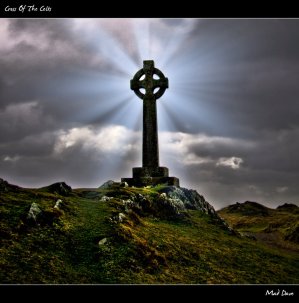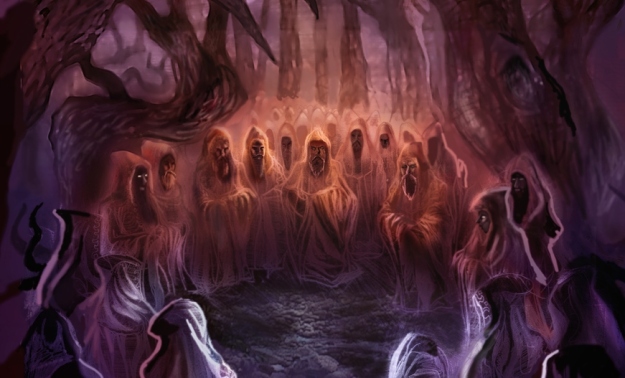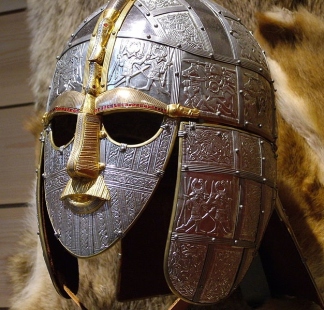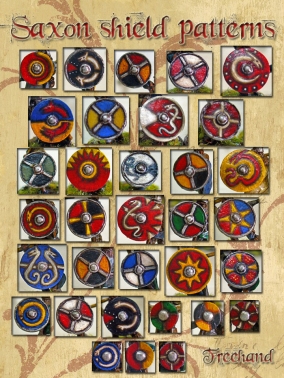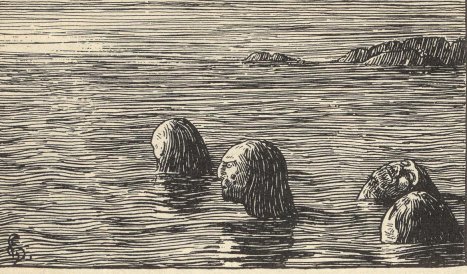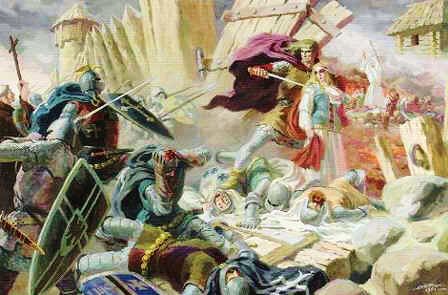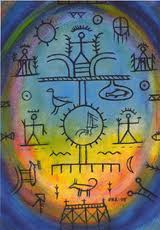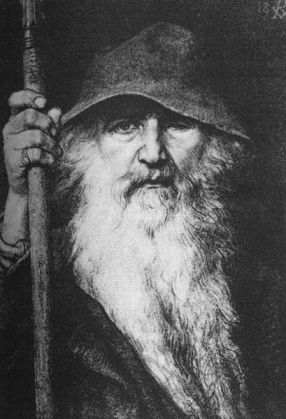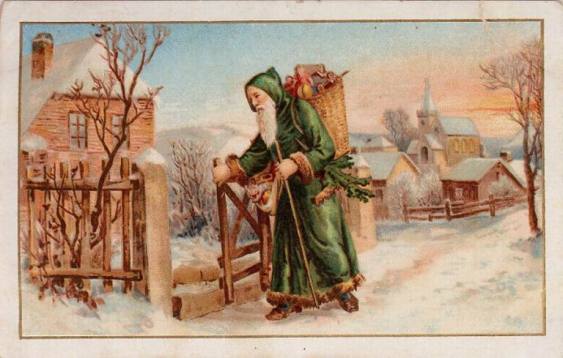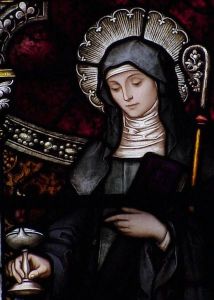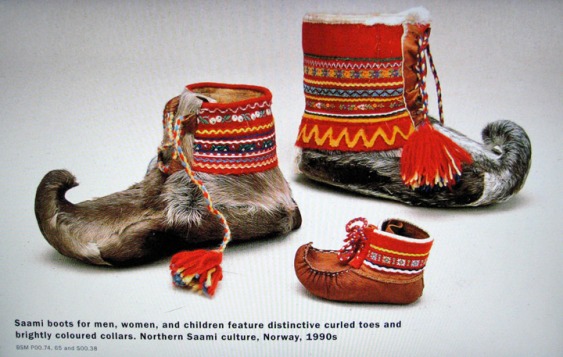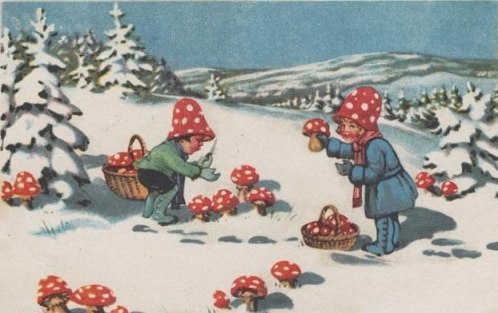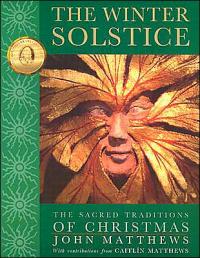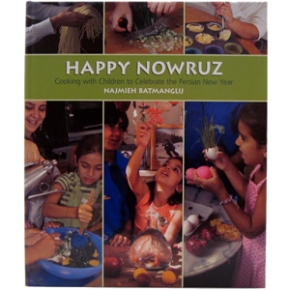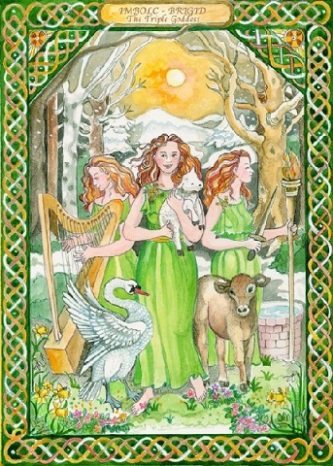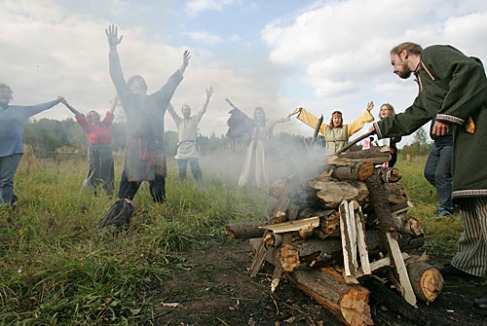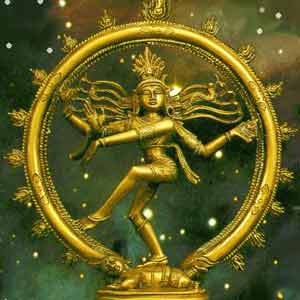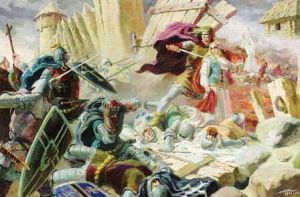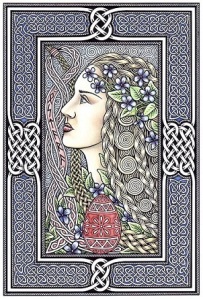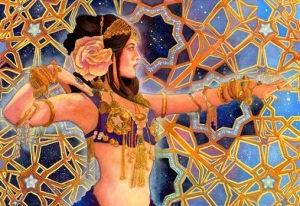When people speak about conversion from the Old Religion to Christianity in Europe, they tend to use universal terms, as if it happened the same everywhere all at once. It didn’t.
There are a lot of generalizations and blatant falsities put forth from many different angles. Many Christians insist that conversion happened peacefully and voluntarily. Many modern Pagans insist that all of conversion was bloody and forced.
What we need to remember is that the conversion of Europe occurred in a time span of over one thousand years. The process happened differently in different areas.
Since this blog focuses on Northern Europe, defined by me as the area stretching from the British Isles to Russia, barring countries speaking a Romance language (sorry, France), I will not go into the very early Church in the Middle East and Mediterranean.
The Celts:
The area where the biggest misunderstanding seems to lie is with the Celts who were the earliest converts outside of the Mediterranean. Wiccans, who tend to cling to Celtic culture and claim to follow a form of Celtic paganism, are often the worst offenders of spreading false history. Sadly for them, the Celts were one group in Northern Europe who converted by and large peacefully and voluntarily.
Because they converted so early, very little is known about what Celtic pagans actually believed and practiced. Since the Church arrived early in Ireland in the 5th century, they were the minority and therefor had to tread lightly, and this conversion happened organically and willingly (much to the chagrin of Wiccan writers who have been reading garbage by unqualified writers who don’t fact check).
There was no Druid slaughter by Christians. That is a myth. The Druids are thought to have blended into the Celtic Christian priesthood. One reason for the confusion is that the Romans DID slaughter druids. But this was simply due to the fact that they were a political threat. It had nothing to do with religion. In fact, this slaughter occurred nearly 300 years prior to the conversion of Rome! It’s called the Menai Massacre, and it is the only known large scale slaughter of druids.
Also, Saint Patrick was NOT a slayer of druids. Please read this blog by The Wild Hunt and this one by P. Sufenas Virius Lupus, a Celtic Reconstructionist Pagan and scholar for more information on this rumor.
The Anglo-Saxons:
The area that became England was home to many Christians when they were occupied by Rome. At this point in time, Christians and pagans lived side by side. It was actually a very diverse religions environment, where people practiced both Roman, Celtic, and a hybrid version of paganism called Roman-Gallo paganism. When the Romans left Britain, Christianity faded away with the influx of the pagan Anglo-Saxons early in the 5th century.
The Church did make huge missionary efforts to convert the Anglo-Saxons. Again this was very early (tail end of the 6th through the 7th centuries) and was a complicated process. At this point in time, virtually all Germanic people were still pagan (barring the Franks who had been long Romanized by now and no longer retained their Germanic language, religion, or identity). However, France had converted to Christianity one hundred years prior under the Frankish Merovingian king Clovis I, in the year 496 A.D. Between the French to the East and Celts to the North joining up with the Roman Church, the reach of Christian political military and political power was now stretching further out of the Mediterranean. So, it appears this is the point where political pressure began to be a true factor in the conversion of the Kings and people of Northern Europe.
However, Anglo-Saxon conversion still happened very gradually. Their kings were not known for using violence to forcibly convert their people. And there were many tug-of-wars when a Christian king’s pagan son inherited the throne. The common people retained their pagan customs for many years, as is so famously lamented by the Venerable Bede. The Anglo-Saxon retained a lot of their pre-Christian culture even after they were by and large fully converted. It was really when the asshole NORMANS came in with their stricter version of Christianity when the Germanic systems of fairness in rule of law became oppressed by the choke hold of Norman rule.
A wonderful fiction novel, but one that was meticulously researched, about the old religion of the Anglo-Saxons and their conversion is The Way of Wyrd by Brian Bates.
Charlemagne’s Epic Battle Against the Valiant Pagan Saxon King Widukind:
Ok, so along comes Charlemagne in France. Just as his predecessor Clovis converted to Christianity and united the Franks, the Christian Charlemagne sought to unite the German tribes and used forced conversion as a tool. He was one of the first rulers actually use forced conversion en masse.
HOWEVER, it should noted that Charlemagne was defending Europe from onslaughts of Muslim invaders from the South (ever heard of the Reconquista? the reclaiming of Spain?). In case you haven’t noticed, uniting pagans is like herding cats. The Germanic tribes were fiercely independent and more prone to tribal raiding for land and goods than large scale war. I believe Charlemagne used Christianity as a way to unite Europe under one banner to keep the Muslims from conquering Europe.
(The Crusades are another story, but that’s another false history that the Christians were to blame. The Crusades started as a response to Muslim invasions, that had a long history. Vlad the impaler is another “hero” who kept the Muslim invaders from getting in through Southeastern Europe.)
Ahem. That said, Charlemagne is responsible for the conversion of the Saxons. The brave pagan Saxon king Widukind (who’s name means Forest Child, how perfect is that) fought against Charlemagne for years in what is known as The Saxon Wars. He was finally forced to surrender to save his people from slaughter, and his conversion was a self sacrifice to protect his people.
The Norse:
On to the Norse. King Olaf converted as a political move in the year 995, because by now most of Europe had gone over. Olaf was an asshole. He brutally forced his people to convert or die. It was Olaf who slaughtered the Volvas and Norse pagan priesthood or “wise people.”
There’s not a heck of a lot more to say on that. Other than that the things people think happened with the Celts, actually DID happen with the Norse. It was a vile and bloody forced conversion and their religious leaders and “sorcerers” who were sort of equivalent to Druids were slaughtered by Christians. Sorry Celts, the Norse win the prize!
The Balts and Slavs – Crusades in Northern, Central, and Eastern Europe:
The Teutonic Crusades, also called Northern Crusades, Baltic Crusades, and the Wendish crusades occurred a few centuries later. By now the Germans and Norse had been completely assimilated by the Borg (I mean Church) and were used as fighting-bots to go out and slaughter remaining pagans. This is how the Balts became Christianized, and in the case of some of them, especially the Prussians, this is even considered by many to be a genocide. The Wendish crusades were against the Slavs, I believe Poland and nearby areas.
Lithuania held out very long, until the late 15th century, when the now Christian king of Poland waged war on them. You will notice a pattern here. Forcibly convert a people, assimilate them into the machine. Then send them off to assimilate their neighbors. That’s how the Borg, I mean the Church, worked.
The Last Holdouts – the ones that hardly anybody even knows about:
After that the main pagans left were the Saami in the tippy top of Scandinavia, a Finno-Ugric people, who were still pagan as late as the 18th and 19th century. It was the Lutherans who went out of their way to go after the Saami, and their tactics were remarkably similar to how Christians in America assimilated Native Americans and attempted to make them lose their languages and native religions.
The Mari El in Russia have an unbroken line of pagan tradition. Probably due to their remote location, they were left alone more than other groups, however they still faced many periods of persecution. They are still pagan today (although many are Christian, the pagans still thrive).
So, there we have it. As you can see, conversion was a long and widely varying process. Anyone who speaks of it in sweeping generalities simply demonstrates that they don’t actually know much about it!
We’re building our section for pagan scholarship and reliable history in our shop. So please give it a gander. Books covering the conversion have also been added 🙂
~ Post by Aelfwynne ~
